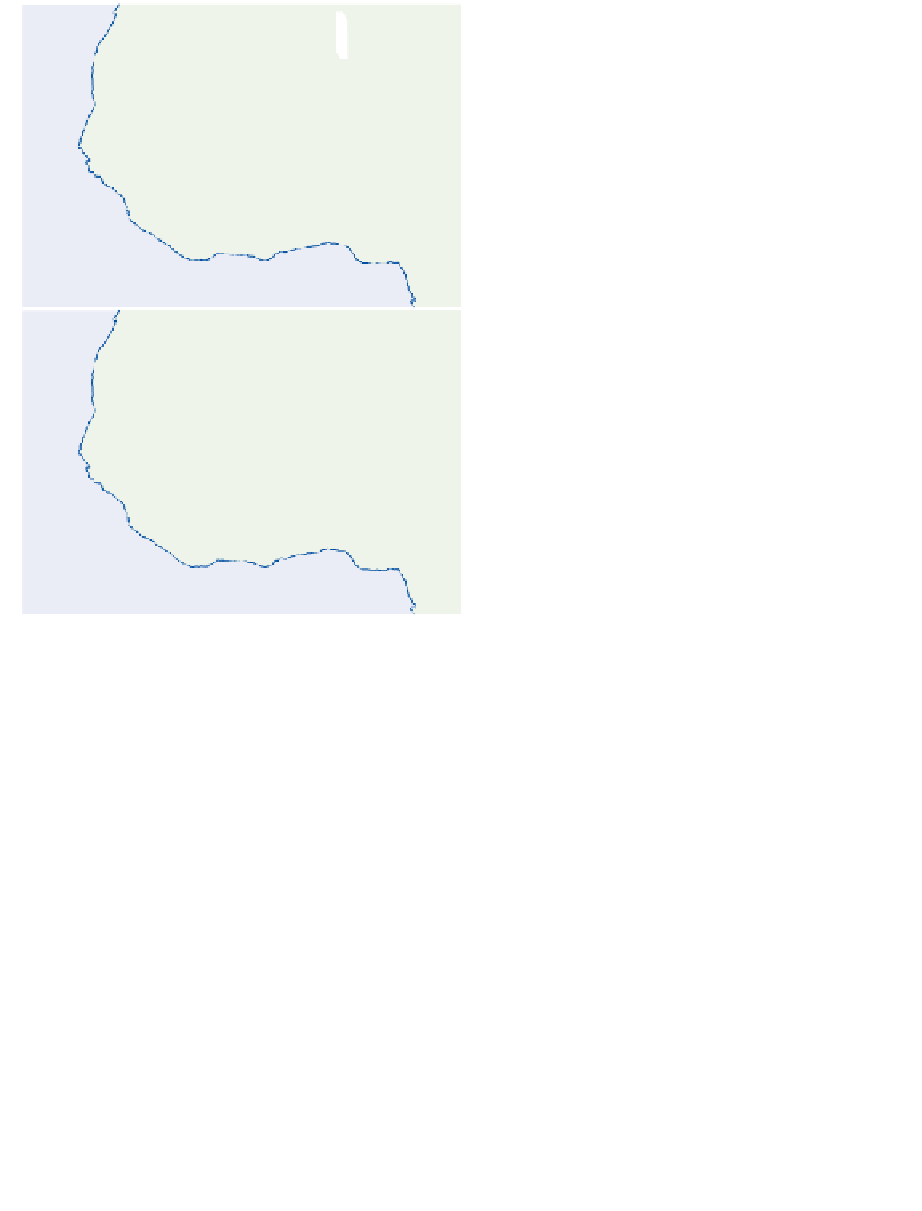Geoscience Reference
In-Depth Information
weaker AEJ (>10m s
-1
) at about 4000-5000m (see
Figure 11.40B
). The lower jet occupies a broad
band from 13
JANUARY
10°W
0°
10,000 m
5,000
0
Easterly air stippled
N, on the underside of
which oscillations produce easterly waves, which
may develop into squall-lines. By July, the
southwesterly monsoon airflow has spread far to
the north and westward-moving convective
systems now determine much of the rainfall. The
leading trough reaches its extreme northern
location, about 20°N, in August. At this time, four
major climatic belts can be identified over West
Africa (see
Figure 11.40A
):
°
N to 20
°
20°N
20°
At
10°E
UPWELLING
COLD
WATERS
B
10°
10°
C
Jan - April
MT
WARM
WATERS
(Jan 29°C)
Ab
WARM WATERS
10°
0°
10°
WIND SPEED m s
-1
JULY
10°W
0°
20 - 30
10 - 20
0 - 10
1
A coastal belt of cloud and light rain related to
frictional convergence within the monsoon
flow, overlain by subsiding easterlies.
2
A quasi-stationary zone of disturbances
associated with deep stratiform cloud yielding
prolonged light rains. Low-level convergence
south of the easterly jet axes, apparently
associated with easterly wave disturbances
from east central Africa, causes instability in
the monsoon air.
3
A broad zone underlying the easterly jet
streams, which help to activate disturbance
lines and thunderstorms. North-south lines of
deep cumulonimbus cells may move westward
steered by the jets. The southern, wetter part of
this zone is termed the Soudan, the northern
part the Sahel, but popular usage assigns the
name Sahel to the whole belt.
4
Just south of the Monsoon Trough, the shallow
tongue of humid air is overlain by drier
subsiding air. Here there are only isolated
storms, scattered showers and occasional
thunderstorms.
20°N
20°
At
10°E
B
10°
10°
C
WARM
WATERS
0
km
500
10°
Ab
Togo Gap
Little Dry Season (Aug)
UPWELLING
COLD WATERS
July - Oct
WARM
WATERS
0°
10°
Figure 11.41
Mean wind speeds (m s
-1
) and directions in
January and July over West Africa up to about 15,000m. Ocean
water temperatures and the positions of the Monsoon Trough
are also shown, as are the area affected by the August Little
Dry Season and the location of the anomalous Togo Gap. The
locations of Abidjan (Ab), Atar (At), Bamako (B) and Conakry
(C) are given (see precipitation graphs in Figure 11.42).
Source: From Hayward and Oguntoyinbo (1987). By permission of
Rowman and Littlefield.
trough oscillates diurnally with a northward
progress of up to 200km in the afternoons
following a smaller southward retreat in the
mornings. The northward spread of moist,
unstable and relatively cool southwesterly airflow
from the Gulf of Guinea brings rain in differing
amounts to extensive areas of West Africa. Aloft,
easterly winds spiral clockwise outward from the
subtropical high pressure center (see
Figure 11.41
)
and are concentrated between June and August
into two tropical easterly jet streams; the stronger
TEJ (>20m s
-1
) at about 15,000-20,000m and the
In contrast to winter conditions, August
temperatures are lowest (24-25°C) along the
cloudy southern coasts and increase towards
the north, where they average 30
°
C in southern
Algeria.
Both the summer airflows, the southwesterlies
below and the easterlies aloft, are subject to
perturbations, which contribute significantly to

















































































































































































































































































